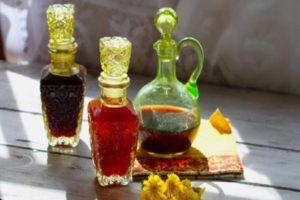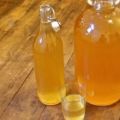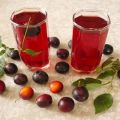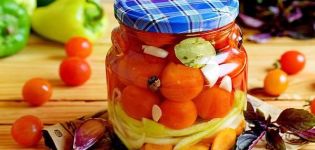4 easy homemade green grape wine recipes
Now the market offers the widest range of alcoholic beverages. White wine deserves special attention, which is made from the fruits of light green grapes. It has a pleasant, light aroma and a rich, delicate taste. Depending on how much sugar is added at the time of preparation, you can get both sweet, semi-dry and dry wine.
Properties of white grape wine
Wine has many beneficial properties for the human body, of course, when used in moderation. But, for all its benefits, this drink can also harm a person, especially with abuse or the presence of chronic diseases.
Benefit
It has a high content of trace elements, vitamins and essential oils, which is significantly higher than in grape juice. Wine significantly improves digestion, warms up the appetite, and helps to better assimilate proteins and iron. It promotes the removal of toxins from the body, including free radicals, which cause great harm to it. Also, the drink helps fight colds and is used to prevent viral diseases.
Harm and contraindications
The harm from the use of wine can manifest itself when the daily allowable dose of the drink is exceeded, which is 120-150 milliliters. Significant abuse of wine leads to disruption of the normal functioning of internal organs such as the kidneys, liver, digestive and genitourinary systems. There are also serious disorders in the human psyche.

Wine is not recommended for people with bad teeth, as the acids contained in the drink corrode tooth enamel. It is dangerous to use cheap, low-quality or simply unripened wines prepared in violation of technology, from dubious raw materials and other incomprehensible ingredients. Otherwise, severe allergies, a terrible headache and even an asthma attack may occur.
Suitable varieties for winemaking
Making high-quality, tasty and aromatic wine directly depends on the correct choice of the right variety. At the moment, the best varieties for winemaking are:
- Chardonnay;
- Sauvignon;
- White Muscat;
- Sylvaner;
- Kokur;
- Riesling;
- Isabel;
- Firstborn of Magarach;
- Feteasca;
- Müller-thurgau.
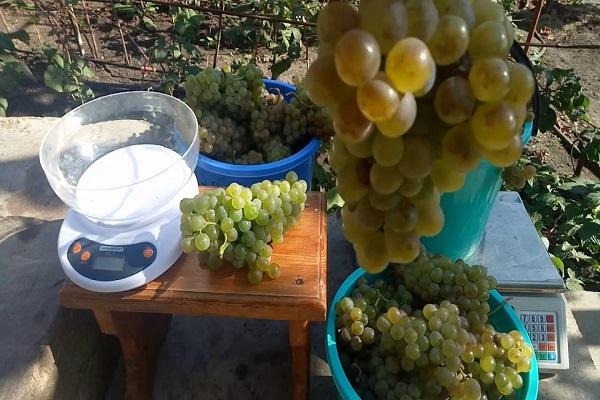
Requirements for cookware
You can prepare and store wine in different containers. Glass bottles and bottles, barrels and barrels made of alder and oak wood, stainless containers, as well as cans and barrels made of high-quality polymers are suitable. But the latter option is only suitable for short-term storage of the drink.
Enamel and even aluminum dishes are used to crush the juice, but then it must be poured into other, more suitable containers for safe fermentation.
How to choose ingredients
For the preparation of such wines, varieties are chosen with the desired ratio of sugar and acids, as well as with a high level of juice yield. The quality of the future drink directly depends on this. Moreover, the must should ferment naturally, without adding yeast, this is also taken into account when choosing a variety.
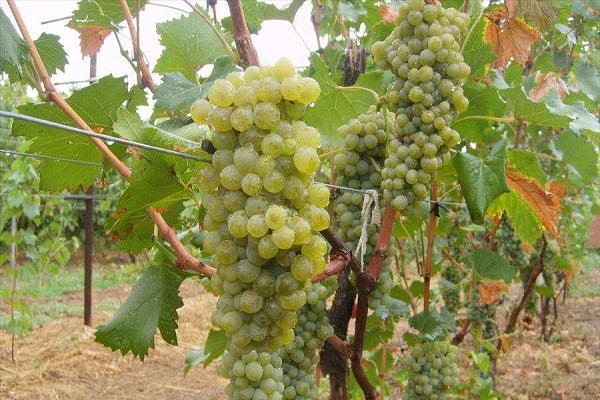
How to make white wine at home
To prepare delicious, aromatic, sweet, semi-sweet or dry wine, you need to choose the right raw materials and strictly follow the directions of proven recipes.
Dry wine
Dry wines are considered to be with a minimum sugar content (no more than 0.3%) or no sugar at all. As a result of fermentation by yeast, all the fructose in the juice is processed, but the preparation is not specially sweetened. To make such a drink, high quality raw materials are required; such wine is considered natural and especially healthy.
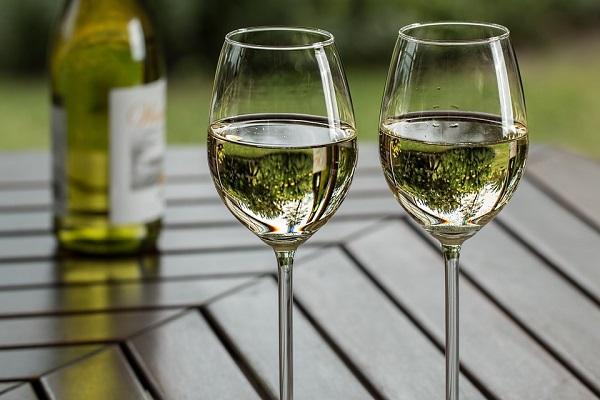
A tried and tested recipe can make a great homemade wine. Required:
- grapes (with a sweetness of at least 15%) - 20 kilograms.
Step by step cooking:
- First, they wash well all the containers necessary for preparing a drink and wipe dry. This will protect the workpiece from unpleasant odors and mold.
- Now the berries are being sorted out. All unripe, rotten and spoiled fruits are discarded. They can spoil the taste of the drink - it will become tart and sour. The fruits are never washed so that the wort ferments well.
- The selected fruits must be crushed by hand, the seeds must be intact, therefore the use of a press is not suitable. The pulp and skin contain simple substances that play an important role in shaping the taste of the drink. This is why manual crushing creates the ideal environment for wort fermentation.
- Now the wort is poured into a glass bottle (the container is filled 3/4 of the volume) with a wide neck, which is covered with gauze. Now you need to put the container in a warm place (with a temperature of +20 C ... + 25 C degrees) for a day.
- After the pulp is squeezed through cheesecloth, and the pure juice is poured into a bottle with a narrow neck for subsequent fermentation. A medical glove is put on the neck or a water seal is installed.
- The container is placed in a cellar or pantry, with a temperature from +16 C to + 28 C degrees. The workpiece is left to ferment for 1-1.5 months, and then the young wine is carefully poured into bottles. They are sealed with lids and placed in a basement with a temperature of +6 C to +16 C for 1 month. After this period, the taste will soften and the wine will be ready to drink.

Semi-sweet
Making homemade wine with your own hands is not as difficult as it seems at first. But it will take attention, patience and strict adherence to the directions of the recipe. Required Ingredients:
- grapes - 10 kilograms;
- granulated sugar - 3 kilograms.
Step by step cooking:
- The grapes are sorted out, removing rotten berries. There is no need to wash them - there is yeast on the surface of the fruit, thanks to which the wort will begin to ferment.
- The fruits are poured into an enamel bowl or saucepan and crushed well in any way possible. After the container is covered with gauze and put in a warm place for 5 days. And you need to stir the mass with a wooden spatula several times a day.
- After the first signs of the onset of fermentation - the berries begin to float to the surface - all the pulp is placed in a colander, and the grape juice is filtered through a layer of gauze into a glass bottle. After that, sugar is poured, stirred, and a medical rubber glove, pierced in several places, is put on the neck of the bottle. It is tightly fixed with an elastic band. The bottle itself needs to be filled to 2/3 of its volume, leaving room for gases.
- In a few weeks the wine will stop playing - the glove will stop swelling and falling off.Now you need to do a tasting to determine the sugar level. If the preparation is sour, then add more sugar and let it stand for a few more weeks. When the taste of the drink is normalized, it is filtered again and poured into glass bottles. Then they are sealed with corks and placed in a cool cellar for 2-3 months. After this period, the wine can be safely consumed.
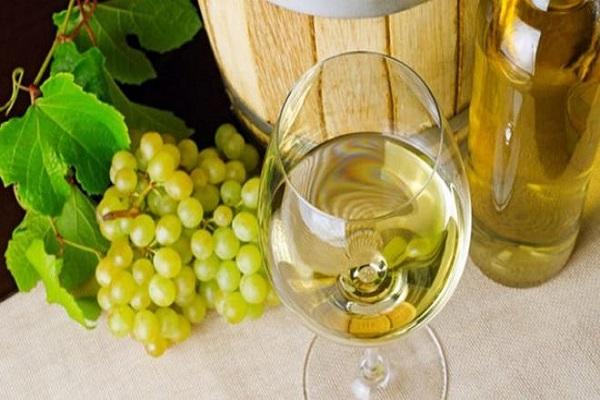
Sweet
Sweet wines include 55-80% sugar. To obtain a high-quality drink, the most juicy, ripe and even overripe bunches with the maximum sugar content are chosen. Cooking begins with the preparation of these ingredients:
- grapes - 10 kilograms;
- sugar - 3 kilograms.
Step by step cooking:
- After sorting the fruits, they are crushed to obtain juice and the wort is allowed to settle.
- Sugar is poured into the workpiece and stirred thoroughly.
- A water seal is put on the bottle and the workpiece is left to ferment for 3 weeks.
- After that, the young wine is separated from the formed sediment, closed with a cork and left for another 2 months.
- Now the drink is filtered through cheesecloth again, poured into glass bottles, corked and placed in a cool place (basement, cellar) for 8 months. At the end of the term, the sweet wine is ready to drink.
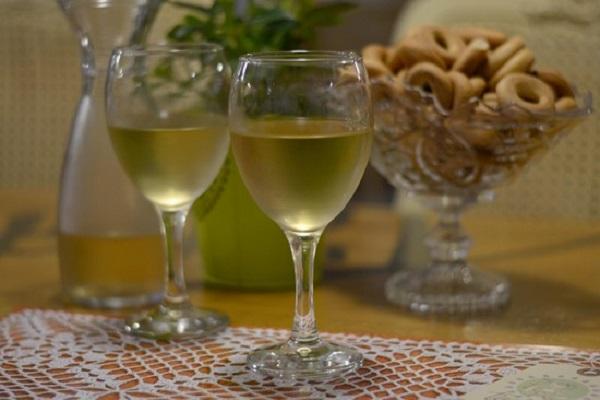
Ice drink
Now an interesting and tasty drink is becoming more and more popular - ice wine made from light grapes. Many people think that a quality product is obtained only in the factory. But this is fundamentally wrong - excellent ice wine is easy to make at home.
You will need:
- fruits of white grapes - 1.5 kilograms;
- sugar - 1.5 kilograms.
Cooking features:
- To get a really tasty drink, it is important to select exactly half-ripe berries. The highlight of the technology is that before squeezing out the juice, the fruits are frozen. It is thanks to this procedure that the drink acquires special taste and enchanting aroma, which is the reason for its growing popularity.
- After the preparation technology is no different from that used in the production of ordinary white wine. The only important feature is to pour sugar into the workpiece after the very last, final stage of filtering the juice.

Storage subtleties
An open bottle of white wine is consumed within 3 days, after which it loses its taste and aroma. To extend this period, the bottle is corked and cooled. An effective technique is to transfer from a larger container to a smaller one to minimize the air gap. In turn, bottles sealed with corks are stored in dry, sufficiently dark, cool cellars and basements.

The optimum temperature is from +10 C to +14 C degrees, then the wine not only retains its quality, but also continues to "ripen", gaining taste and aroma. Moreover, it is desirable that the bottles with the drink are stored in a horizontal position.
Some more important conditions for storing wine are the absence of foreign, sharp, unpleasant odors and complete rest for containers.
Until the moment of use, it is not recommended to shake, rearrange or turn them over.

